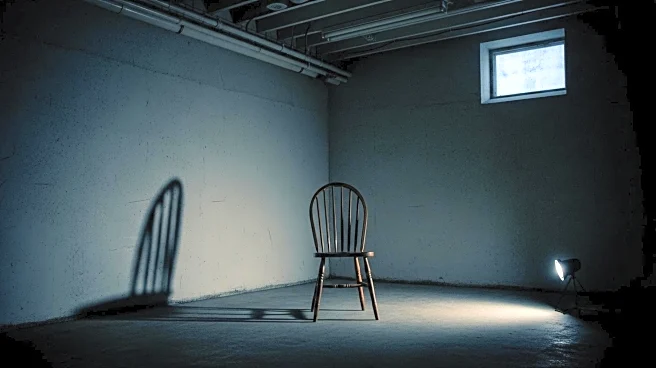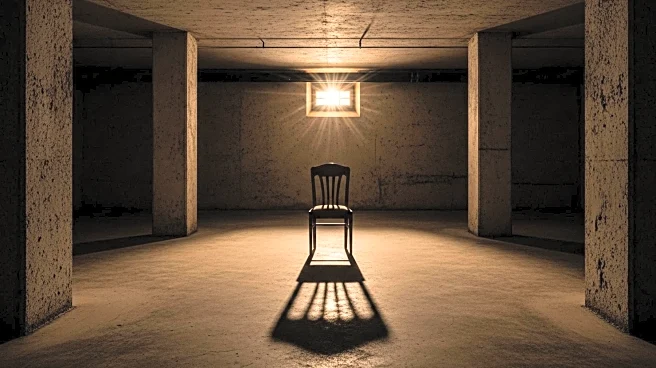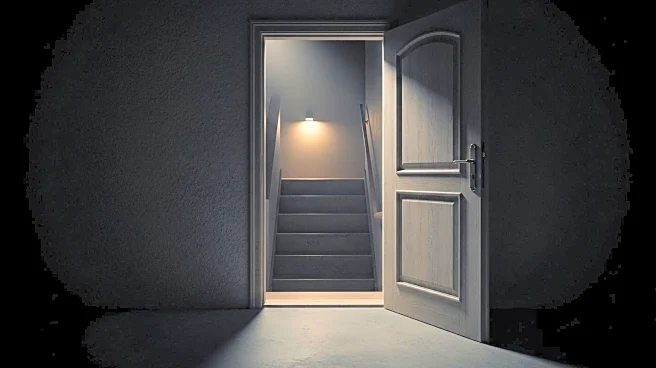What's Happening?
The film 'The Man in My Basement,' featuring Willem Dafoe and Corey Hawkins, is a psychological thriller adapted from Walter Mosley's 2004 novel. Set in Sag Harbor, a historically African American community, the story follows Charles Blakey, a young Black man who inherits his mother's home. Facing financial difficulties, Blakey accepts a peculiar offer from Anniston Bennet, a wealthy businessman played by Dafoe, to rent his basement for a significant sum. The film explores themes of guilt, trauma, and racial dynamics, but struggles to deliver a cohesive narrative or compelling psychological depth. Directed by Nadia Latif, the movie attempts to delve into complex themes but often falls short, leaving many ideas underdeveloped.
Why It's Important?
The film's exploration of racial and psychological themes reflects ongoing societal conversations about race and identity in America. By setting the story in a historically African American community, it attempts to address issues of heritage and personal trauma. However, the film's inability to fully realize these themes may limit its impact on audiences and critics. The performances by Dafoe and Hawkins are notable, yet the film's lack of narrative cohesion could affect its reception and influence in the broader cultural discourse. This highlights the challenges filmmakers face in adapting complex literary works into engaging cinematic experiences.
What's Next?
As the film makes its rounds in festivals and potentially wider releases, audience and critical reception will determine its success and influence. The film's themes may spark discussions about the portrayal of race and identity in media, potentially influencing future projects. The performances, particularly by Dafoe, may garner attention during award seasons, although the film's overall impact remains uncertain. The director, Nadia Latif, may continue to explore similar themes in future projects, building on the foundation laid by this film.
Beyond the Headlines
The film's attempt to address racial and psychological themes through a thriller format raises questions about the effectiveness of genre blending in conveying complex social issues. The use of historical and cultural artifacts within the narrative suggests a deeper commentary on the preservation and interpretation of African American history. However, the film's execution may prompt discussions about the responsibilities of filmmakers in accurately and sensitively portraying such themes. This could influence future storytelling approaches in the industry.











